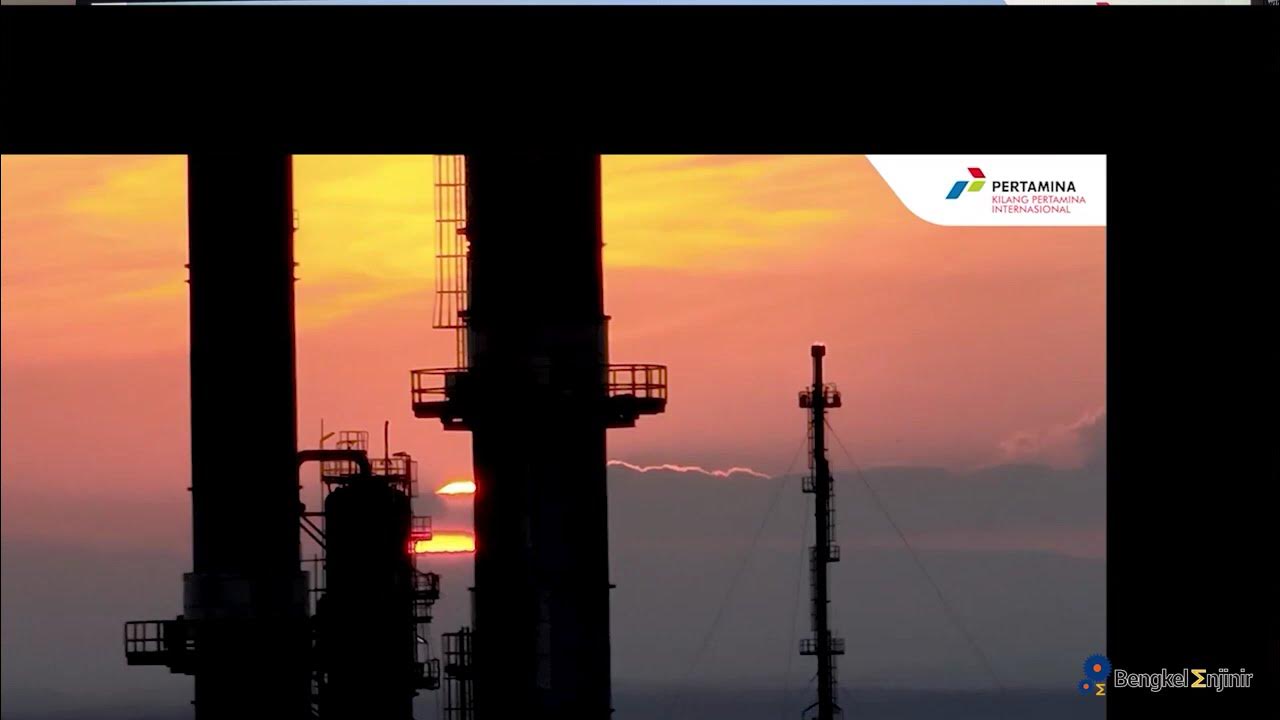Kimia Industri - Proses Pembuatan Asam Sulfat (Bag.2-Diagram Alir Proses Kontak)
Summary
TLDRThis video script outlines the process of sulfuric acid production via the contact method, as explained by Pak Yoga. It begins with sulfur being burned to produce SO2, which is then directed to a heat exchanger and a converter where it's catalytically converted to SO3 with the aid of Fe2O3. The SO3 is cooled in an economizer before being absorbed by sulfuric acid in an oleum tower, resulting in a concentrated sulfuric acid product of 98-99%. The process involves heat recovery and recycling for efficiency, showcasing the industrial chemistry behind acid manufacturing.
Takeaways
- 🔍 The process begins with sulfur being burned to produce sulfur dioxide (SO2).
- 🌪️ Air is introduced to the process to facilitate the drying of sulfur and the subsequent combustion.
- 🔥 The combustion of sulfur in the presence of air results in the formation of SO2 and heat vapors.
- 🌡️ The SO2 and heat vapors are then directed to a heat exchanger where they are separated and utilized for power generation.
- 💧 The SO2 is cleaned by passing it through a gas filter to remove impurities and obtain clean SO2.
- 🔄 SO2 is converted to SO3 in a converter with the help of a catalyst, such as iron oxide (Fe2O3).
- 🌀 The heat generated from the conversion process is used to maintain the temperature in the converter and is also sent back to the combustion furnace.
- 🌿 SO3 is cooled in an economizer before being sent to the oleum tower for absorption with sulfuric acid.
- 💧 In the oleum tower, SO3 is absorbed to form oleum, which is then cooled and partially recycled back to the oleum tower.
- 🏭 The final product, sulfuric acid with a concentration of 98-99%, is obtained and cooled before being stored in tanks for use or further processing.
Q & A
What is the initial material used in the process of making sulfuric acid as described in the script?
-The initial material used in the process is sulfur, which is then fed into the system.
What happens to the sulfur after it is fed into the process?
-The sulfur is burned in a combustion furnace, undergoing oxidation to form SO2 (sulfur dioxide).
How is the sulfur dioxide (SO2) produced in the script's process further treated?
-SO2 is then directed to a heat exchanger where it is heated and separated from other gases.
What is the role of the catalyst in the conversion process of SO2 to SO3 as mentioned in the script?
-The catalyst, specifically ferric oxide (Fe2O3), aids in the conversion of SO2 to SO3 (sulfur trioxide) in a converter.
How is the heat generated in the conversion process utilized?
-The heat generated is used to preheat the gases going back into the converter for subsequent reactions and also directed to the combustion furnace for the next burning process.
What is the purpose of the economizer in the script's sulfuric acid production process?
-The economizer cools down the SO3 gas, preparing it for the absorption process in the absorption tower.
What occurs in the absorption tower, also known as the Menara Oleum, according to the script?
-In the absorption tower, SO3 is absorbed by sulfuric acid to form oleum.
What is the final product obtained from the absorption tower and what is its concentration?
-The final product obtained is fuming sulfuric acid, with a concentration of 98 to 99%.
How is the unabsorbed SO3 gas dealt with after the absorption tower process?
-Unabsorbed SO3 gas is directed to the sulfuric acid absorption tower where it is absorbed using water to produce sulfuric acid.
What is the final form of sulfuric acid produced in this process and what is its concentration?
-The final form of sulfuric acid produced is a liquid with a concentration of 98 to 99%.
What is the ultimate destination of the produced sulfuric acid as described in the script?
-The produced sulfuric acid is either cooled and recycled back into the process or stored in tanks as the final product.
Outlines

This section is available to paid users only. Please upgrade to access this part.
Upgrade NowMindmap

This section is available to paid users only. Please upgrade to access this part.
Upgrade NowKeywords

This section is available to paid users only. Please upgrade to access this part.
Upgrade NowHighlights

This section is available to paid users only. Please upgrade to access this part.
Upgrade NowTranscripts

This section is available to paid users only. Please upgrade to access this part.
Upgrade NowBrowse More Related Video

Kimia Industri - Proses Pembuatan Asam Sulfat (Bag 1. Pendahuluan)

Part 4, Pabrik Asam sulfat: Proses Produksi dari bahan baku Spent Acid-limbah Kilang minyak.

6. Chemical Reactions (Part 4) (4/5) (Cambridge IGCSE Chemistry 0620 for 2023, 2024 & 2025)

Salt Analysis Anion identification Experiment Edunovus Online Smart Practicals

Making esters - Part 1 | Chemistry Tutorial

TUGAS 1
5.0 / 5 (0 votes)